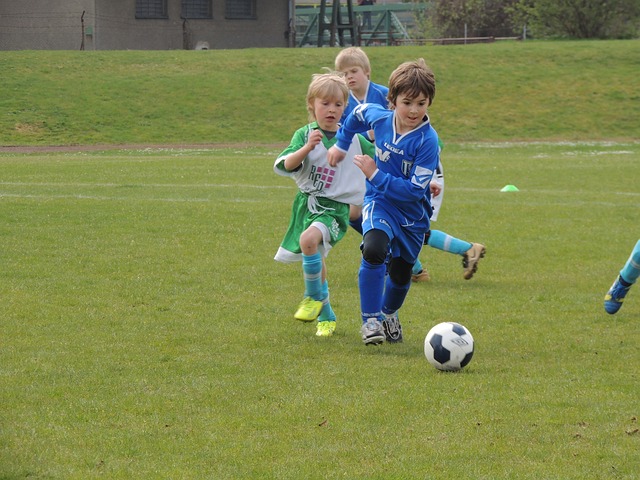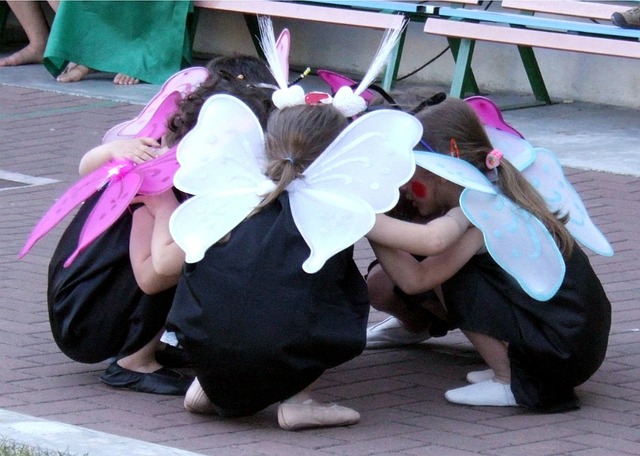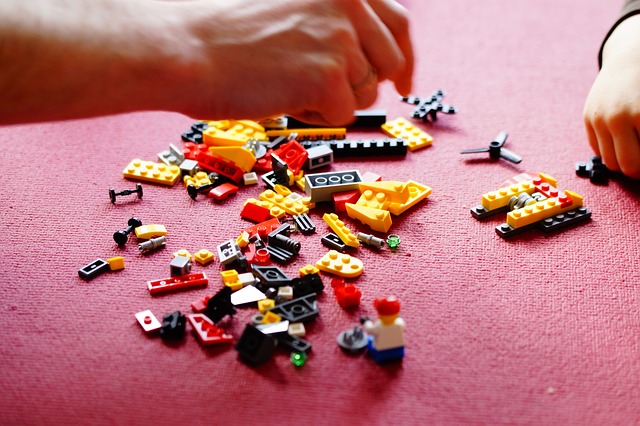Children’s Games
One of the biggest aspects of our childhood is our “Children’s games” which always play a vital role in any child’s development. However, games also help children learn new skills, build confidence, and make friends within the community. There are many different types of children’s games, each with unique benefits. We can categorize games for children into two basics which include indoor and outdoor. In our American community children are likely to have an interest in video games instead of physical activities. But somehow foot ball and base are still the most interesting games in the region. In some other articles, we will explain more in-depth about the ratio between of interest of the American children in games and what kind of games are more in nowadays. But here we just explore some of the basic and general ideas of games in which we being parents involve our children safely.
Indoor Games for Children: Unlocking Fun and Learning at Home
The category of Indoor games participates in children’s entertainment and learning opportunities. This is especially true in cases when going outside is not feasible or convenient. These games allow children to engage their minds, develop various skills, and bond with family and friends. Here for our readers, explore the exciting indoor games that promote creativity, critical thinking, and social interaction, all from the comfort of home.
Board Games and Card Games
These games have long been cherished pastimes for children and families. From classics like Monopoly, and Scrabble, to modern favourites like Settlers of Catan and Ticket to Ride, board games encourage strategic thinking, decision-making, and healthy competition. Card games like Uno, Go Fish, or Rummy improve numeracy, memory, and social skills, making them enjoyable and educational indoor options.
Advantages of Board Children’s Games
Board games offer several benefits that contribute to children’s all-inclusive development. Here are some significant advantages and their impacts:
- Social Interaction and Communication: These games substitute face-to-face interaction. While encouraging children also to communicate, take turns, and collaborate with others. Also very helpful for promoting social skills, empathy, and sportsmanship.
- Cognitive Development: These board games need problem-solving, strategizing, and logical thinking. This dramatically helps children learn to plan, make decisions, and familiarize their strategies, enhancing their cognitive abilities.
- Numeracy and Literacy Skills: Some board games integrate math, reading, and vocabulary elements. By the way, it dramatically helps children learn in a fun and engaging environment.
- Concentration and Focus: It encourages children to stay engaged, pay attention, and concentrate on the game. All those skills are transferable to other areas of life, including academics.
- Emotional Development: It also allows children to experience and manage various emotions. This includes excitement, disappointment, and frustration in a controlled and supportive environment.
Types of Board Children’s Games
This kind of game originates in several types, each offering unique experiences and learning opportunities, which include the following:
- Classic Board Games: These everlasting games, which include Monopoly, Scrabble, and Chess, have been enjoyed for generations. Providing strategic gameplay, critical thinking, and healthy competition is beneficial.
- Cooperative Games: Such board games require players to work together to promote teamwork, communication, and problem-solving skills. Examples include Pandemic and Forbidden Island.
- Storytelling and Adventure Games: An exciting learning tool in the form of games that immerse children in captivating narratives. This especially encourages creativity, imagination, and language skills. Examples include Dixit, Once Upon a Time, and Ticket to Ride.
- Dexterity Games: This specific category of challenges is based on which encourages children’s hand-eye coordination, motor skills, and precision. Jenga and Operation are well-known illustrations of it.

Popular Board Children’s Games
- “Candy Land”: This classic game allows players to navigate a colourful candy-themed world, reinforcing young children’s colour recognition and turn-taking skills.
- “Ticket to Ride: First Journey”: The game is interestingly helpful and introduces children to geography and strategic planning as they build train routes across a map.
- “Sequence for Kids” combines strategy and matching skills as children aim to get a sequence of cards while blocking their opponents.
- “Qwirkle”: This is a challenging base game for the children to enhance their creativity lines of matching colours and shapes.
- Puzzles and Brain Teasers
These puzzles captivate children’s minds while honing their problem-solving abilities. Jigsaw, crossword, Sudoku, or brain teaser books challenge children to think critically, improve their focus, and enhance spatial reasoning. Such activities provide a sense of accomplishment as children piece together the solution, fostering patience, perseverance, and logical thinking.
Creative and Artistic Games
Indoor games that encourage creativity and artistic expression unleash children’s imagination and allow them to explore their creative talents. Activities such as drawing or painting contests, DIY crafts, or building with blocks or Lego bricks provide opportunities for self-expression, fine motor skill development, and imaginative play. These games promote artistic growth, boost confidence, and stimulate innovation.
Interactive Video Games and Apps
While moderation is vital, carefully selected interactive video games and educational apps can provide valuable learning experiences for children. Educational games that incorporate subjects like math, science, or language learning can make learning enjoyable and engaging. Cooperative multiplayer games also promote teamwork and communication skills, fostering a sense of camaraderie among players.
Worse consequences of virtual Children’s Games on health
There are more benefits and advantages that we elaborate already on this subject. But somehow, specifically concerning virtual games associated with them, they have terrible effects on children’s health. On the one hand, virtual games can facilitate children to get updated with modern skills and improve their cognitive development. This is also an alternate way to enjoy an engaging way for children to spend their free time. However, the famous quote “excess of everything is bad.”

That’s why excessive use of virtual Children’s Games can negatively affect health.
Some of the potential adverse effects include:
- Obesity: There is more chance of obesity in children who devote more time playing virtual games and may risk becoming overweight or obese due to a lack of physical activity.
- Poor posture: Consequences of poor posture could be possible while sitting in front of a computer or gaming console may develop poor posture and lead to back and neck pain.
- Insomnia: According to observation, a higher ratio of lack of sleep among children playing virtual games at night leads to insomnia.
- Social isolation: They may have less time for social interaction with friends and family, leading to isolation and loneliness.
- Aggression: Behavior management issues with violent virtual games may be at risk of becoming more aggressive in their behaviour.
Moreover, parents and caregivers are responsible for monitoring children’s use of virtual games and setting limits is much more important than limiting children from playing in excessive ways. Distracting the children’s attention to other activities such as sports, reading, and social interaction can help mitigate some potential adverse effects of virtual games on children’s health.
Dramatic Play and Role-Playing Games
Such games allow children to step into different roles and explore their creativity. Whether it’s putting on a puppet show, creating a pretend restaurant, or engaging in a game of “make-believe,” these activities foster resourcefulness, language development, and social skills. These interactive indoor games allow Children to act out scenarios, solve problems, and enhance their emotional intelligence.
Outdoor Games for Children: Embracing Fun, Physical Activity, and Adventure
Screens and sedentary lifestyles increasingly dominate today’s modern world. However, outdoor games allow children to engage in physical activity and foster creativity, including social interaction and a connection with nature. The section of the blog article explores a range of exciting outdoor games for children, promoting an active and adventurous lifestyle.
Tag Games
These games are classic outdoor favourites that provide children with endless entertainment. From simple games like “Tag” to variations like “Freeze Tag,” “Shadow Tag,” or “Flashlight Tag,” these games encourage running, alertness, and strategic intellectual. Additionally, it is exciting that such Tag games teach children about boundaries, fairness, and cooperation as they take turns being “it” and chasing their friends.
Scavenger Hunts
One of the most exciting kinds of this category is scavenger hunts spark curiosity, problem-solving, and teamwork while immersing children in the wonders of the outdoors. Whether finding and solving mysteries or following clues, scavenger hunts ignite a sense of adventure. They can be organized in various settings, such as parks, gardens, or neighbourhoods. Such pursuits promote exploration, observation, and critical thinking skills while fostering a love for nature and the environment.
What are the key Benefits of Active Children’s Games?
So that is the acutely healthy fact that active games offer numerous benefits that contribute to children’s overall well-being. Here are some key advantages:

Promoting Fitness, Fun, and Healthy Habits
Active games for children are vital in promoting physical fitness, improving motor skills, and instilling healthy habits from an early age. This also includes physical activity with entertainment, which provides children with opportunities to move, explore, and engage their bodies and minds. So here we dig around the world of action games for children, highlighting their benefits. This includes its different types and famous examples encouraging active play and lifestyle.
Physical Fitness:
These healthy games provide cardiovascular exercise, strength building, and motor skill development opportunities, helping children improve their overall physical fitness levels.
Motor Skills and Coordination:
We can consider such sports or activities that directly or indirectly involve running, jumping, balancing, and throwing to enhance children’s motor skills, coordination, and balance, contributing to their overall physical development.
Cognitive Development:
Such activities often require strategic thinking, problem-solving, and decision-making, stimulating cognitive development and fostering critical thinking skills.
Social Interaction:
No single active sports are possible to play individually. These groups or teams promote social interaction, cooperation, communication, and teamwork among children, fostering their social skills.
Emotional Well-being:
Another hidden advantage of the activities involved with such kinds of sports is the release of endorphins, reduced stress levels, and promote a positive mood. It also helps children build self-confidence, resilience, and a sense of accomplishment.
Categories of Active Games
We can also categorize these games as incorporating various activities that get children moving and engaged. Here are some common types:
Tag and Chase Games: Traditionally come with the generations as classic games, which include Tag, Freeze Tag, and Duck, Duck, and Goose, promote running, agility, and strategic thinking. It’s easy to play and can be adapted to different settings and variations.
Relay Races: This is a team competing against each other, passing a baton or object from one teammate to another. Such sports improve speed, coordination, and teamwork.
Sports and Ball Games: Soccer, tennis, and volleyball are active games that develop physical fitness, coordination, and sportsmanship. Also, it includes ball games like dodgeball and kickball are also great options for active play.
Active Video Games: Now, with modern technology and as most children like to play virtual; games, some video games and interactive consoles offer dynamic gameplay that combines physical movement with virtual gaming. Examples include Wii Sports, Just Dance, and virtual reality games.
Obstacle Courses: These activities include obstacle courses in outdoor or indoor settings that encourage children to climb, crawl, jump, and balance, enhancing their motor skills and physical agility.
Popular Active Children’s Games
- “Simon Says”
- “Capture the Flag.”
- “Red Light, Green Light.”
- “Red Light, Green Light.”
Water Games are refreshing to beat the heat and keep children active and engaging during summer. These include “Water Balloon Toss,” “Sponge Relay,” or “Duck, Duck, Splash,” which adds an element of excitement and laughter to outdoor play. Additionally, helps children develop motor skills, coordination, and cooperation while enjoying water’s cooling effects. Just ensure proper supervision and safety measures around bodies of water.
Sports and Team Games
To enhance team building qualities, engage children in team sports and games, encourage physical fitness, and instil sportsmanship and perseverance. Soccer, basketball. This has mainly in America baseball, and flag football are popular options. But we cannot deny the importance of her traditional games as they still, “Capture the Flag,” “Kickball,” or “Ultimate Frisbee,” can be enjoyed in open spaces. As a result, these activities promote healthy competition, communication skills, and strategic thinking while nurturing a sense of belonging within a team.
Nature Exploration and Adventure
Since childhood, if we bring attention to and develop the habits to explore nature’s beauty leading to their whole life near it, it becomes very healthy instead of artificial sports only dominating the modern generation excessively. That’s why it’s beneficial to encourage children to explore and appreciate the wonders of nature is an invaluable gift. These adventurous outdoor activities include hiking, camping, or nature walks, allowing children to learn about plants, animals, and ecosystems firsthand. Activities like tree climbing, building forts, or playing in natural settings also stimulate imagination, physical skill, and a sense of wonder in the outdoors.
Preschool Sports Activities:
Playful Learning for Early Development
Preschool sports activities are vital in fostering early development, encouraging creativity, and providing engaging learning experiences for young children. These games and activities are premeditated to promote cognitive, physical, social, and emotional growth. However, keeping the learning process enjoyable.
Types of Preschool Games and Activities
Preschool games and activities encompass a variety of types that cater to different developmental areas. Here are some common types:
- Art and Craft Activities: These activities involve drawing, painting, cutting, pasting, and sculpting. However, this way, we can easily promote creativity, self-expression, and imagination.
- Sensory play: such activities target engaging the senses, including touch, sight, sound, smell, and taste.
- Music and Movement: This includes singing, dancing, playing musical instruments, and engaging in rhythmic games. Additionally, it enhances gross motor skills, coordination, rhythm, and self-expression.
- Manipulative and Construction Play: These activities involve building and manipulating objects, such as blocks, puzzles, Lego sets, and shape-sorting toys. Applying such sports gives spatial awareness, problem-solving, and fine motor skills.
- Imaginative Play: Pretend play activities allow children to engage in imaginative scenarios, such as playing house, doctor, or grocery store. These activities foster creativity, language development, social skills, and problem-solving.

Team-Building Games for Kids:
Fostering Collaboration, Communication, and Camaraderie
These kinds of sports, especially for children, are learning perspectives with more fun and entertainment to avoid boredom. We can use it as a learning or teaching tool to engage the children. For this reason, kids get to work and play together. This becomes the reason for team building and social interaction as well.
Prominent Benefits and advantages of these sports
Such sports and activities offer numerous benefits for children’s personal and social development. Here are some key advantages:
- Collaboration and Cooperation: These sports emphasize the importance of teamwork and cooperation among team members. So this way, children know how to work as a team, share mutual ideas, and support each other to achieve a common objective.
- Communication Skills: These games require effective communication, both verbal and non-verbal, as children must convey information, listen actively, and express their thoughts and opinions to succeed as a team.
- Problem-Solving and Critical Thinking: Team-building games often present challenges and problems that require collective problem-solving and critical thinking. Children learn to analyze situations, strategize, and make decisions as a team.
- Leadership and Followership: All kinds of such physical activities provide opportunities for children to develop leadership skills by taking the initiative, guiding the team, and making decisions. Also, be supportive followers, respecting and cooperating with others’ leadership roles.
- Trust and Relationship Building: These games foster trust and build strong relationships among team members. When children are involved in the activities, to learn how to rely on and support one another, creating a positive and inclusive team dynamic.
Types of Team-Building Games
Team-building games come in various forms depending on the interest, atmosphere, and resources. But for sure, whatever happens, each offers unique experiences and learning opportunities. Here are some common types:
- Problem-Solving Activities: These games involve solving puzzles, riddles, or challenges as a team. They encourage critical thinking, creativity, and collaboration to find solutions collectively.
- Trust-Building Games: Whatever the games or sports activities, each has the same target to foster trust among team members. Examples include trust falls, blindfolded obstacle courses, and “human knot” activities, where children must untangle themselves while holding hands.
- Communication Games: All sports activities revolve around improving communication skills.
- Outdoor Adventure Games: Outdoor team-building activities such as scavenger hunts, ropes courses, and treasure hunts promote teamwork, problem-solving, and physical cooperation.
- Group Initiatives: Such activities significantly involve challenges that require collaboration and problem-solving. These can include building a tower with limited resources or crossing an imaginary “river” using little objects.
A final word on Indoor games vs outdoor games
We cannot compare indoor and outdoor games as every category has importance and benefits. At the same time, every type has its worse consequences and risks as well. As we know, Indoor games provide children with many opportunities for fun, learning, and bonding with others, all within the comforts of home. As parents and caregivers, we can encourage a healthy balance of indoor and outdoor activities, ensuring children can access stimulating and enjoyable indoor games that promote their all-inclusive development. We must remember that the essentiality of outdoor games holds immense value in a child’s development, offering a holistic experience that combines physical activity, social interaction, and a link with nature. As parents, educationalists, and caregivers, we should inspire and facilitate these experiences, permitting children to hold the joys of outdoor games and fostering a lifelong love for adventure, physical well-being, and consideration.
What Are The Educational Children’s Games:
Engaging, Entertaining, and Enlightening
There is another type of children’s game is educational games. This kind of game belongs to both categories and is very healthy and helpful for the children’s development and learning point overview. These games are specifically for the children to engage in different subjects such as history, science, and language arts. They are uninteresting learning mediums in an entertaining atmosphere and retain information, and they can also be used to supplement classroom instruction.
However, a minimum ratio of children involved in this kindling of educational games exists. So it depends upon the educationalist and caregivers how they can design such informational games with their teaching style to grab the children’s attention and interest. Because it’s understood that by combining entertainment with educational content, these games engage children’s minds, promote critical thinking, and make learning enjoyable. Here we are exploring the world of educational games for kids, highlighting their benefits, different types, and some famous illustrations that accommodate various subjects and age groups.
The Reimbursements of Educational Games
This kind of game ensures countless benefits extending beyond traditional classroom settings. Here are some key advantages:
Engaging and Motivating: This category is famous for captivating children’s attention by incorporating interactive elements, challenges, and rewards, fostering a love for learning.
Active Learning: Children get more development by participating in educational games. So they become active learners in problem-solving, decision-making, and critical thinking.
Personalized Learning: Many educational games familiarize children’s progress and skill levels, providing customized learning experiences that cater to their needs.
Subject Mastery: The games category covers various subjects, including math, science, language arts, history, and more.
Skill Development: These are very helpful in promoting the development of essential skills such as cognitive abilities, problem-solving, creativity, logical reasoning, and teamwork.

Kinds of Educational Games
These games come in various forms by providing different learning styles and preferences. Here are some common types:
Puzzle Games: challenge children to solve puzzles, riddles, and brainteasers, developing their problem-solving and critical-thinking skills.
Math Games: These focused games make learning numbers, operations, and concepts more engaging, utilizing activities like quizzes, puzzles, and virtual manipulatives.
Language Arts Games: For a better understanding of the language and speaking, pronunciation as well as vocabulary expansion, spelling, grammar, and reading comprehension through interactive stories, word games, and spelling challenges.
Science Games: This category introduces scientific concepts, experimentation, and exploration, enabling children to learn about the world around them through interactive simulations and experiments.
Geography and History Games: They help children explore different cultures, countries, historical events, and landmarks, fostering global awareness and recorded knowledge.
Famous Illustrations of Educational Games
- “Prodigy Math Game“: This math-based game syndicates quest and role-playing elements, allowing children to practice math skills while progressing through an engaging storyline.
- “Reader Rabbit“: This is specially designed for young learners; this language arts game incorporates phonics, reading conception, and vocabulary-building activities in a fun and interactive way.
- “Minecraft: This is an excellent combination of creativity and education; this popular game allows children to explore and build in virtual environments while learning about various subjects, including history, science, and architecture.
- “Code.org“: With a focus on coding and computer science, this platform offers collaborating games and tutorials to teach children programming skills and computational thinking.
Learning Games for Toddlers: Fun and Educational Activities for Early Development
The early age of toddlers is when they are more eager to learn about every aspect of the world around them. So it’s very healthy and entertaining to engage them in fun and interactive learning games. This helps keep them entertained and promotes cognitive, language, motor, and social-emotional development.
The key advantages of Learning Games for Toddlers
There are more advantages to engaging toddlers in learning games that contribute to their overall development. Here are some key benefits:
- Cognitive Development: Those kinds of games are specially designed for toddlers and stimulate cognitive skills such as problem-solving, memory, attention, and logical thinking. Also helpful in promoting curiosity, exploration, and intellectual growth.
- Language and Communication Skills: Several learning games for toddlers emphasize language development, vocabulary expansion, listening skills, and expressive communication. So in this way, with the entertainment, toddlers happily learn new words, practice forming sentences, and engage in conversation.
- Fine and Gross Motor Skills Development: This is an excellent source of encouraging the development of fine and gross motor skills. Primarily toddlers engage in activities that involve grasping objects, stacking, sorting, pouring, crawling, walking, and running, enhancing their coordination and physical abilities.
- Social-Emotional Growth: Participating in such activities promotes social interaction, turn-taking, sharing, empathy, and emotional expression. So they learn to navigate social situations, cooperate with others, and regulate their emotions.
- Problem-Solving and Creativity: Ensure opportunities for problem-solving, critical thinking, and creative expression. They encourage toddlers to think outside the box, find solutions, and explore their imagination.
Kinds of Learning Games for Toddlers
There are various learning games for toddlers encompass a variety of types that cater to different developmental areas. Here are some common types:
- Sensory Play: These activities involve exploring different textures, colours, sounds, and smells. For example, it includes playing with sensory bins filled with rice or sand, finger painting, and playing with water or foam.
- Matching and Sorting Games: such games involve categorizing objects based on their attributes, such as shape, colour, or size. Additionally, they learn to identify similarities and differences, promoting cognitive skills and visual discrimination.
- Puzzles and Shape Sorters: Much helps toddlers develop problem-solving skills, hand-eye coordination, and spatial awareness. This way, toddlers learn to manipulate objects, recognize shapes, and complete simple puzzles.
- Alphabet and Number Games: These kinds of mathematical games provide the initial knowledge of toddlers to letters, numbers, and basic concepts of literacy and numeracy.
- Role-Play and Pretend Play: These activities allow toddlers to engage in imaginative scenarios. They can dress up, play with toy kitchen sets, or engage in make-believe activities that promote language development, creativity, and social skills.

Popular Learning Games for Toddlers
- I Spy
- Shape Hunt
- Building Blocks
- Sing-Along and Rhyme Time
- Nature Exploration
A final thought about educational Children’s Games
Such games have revolutionized how children learn, offering engaging and interactive experiences that make learning enjoyable and effective. These categories stimulate critical thinking, promote subject mastery, and develop essential skills. This includes learning math and language arts, science, geography, history, and educational games accommodating various subjects, ensuring a holistic learning experience. By incorporating educational games into children’s lives, parents, teachers, and caregivers can inspire a love for learning, foster intellectual growth, and equip children with new skills.

















